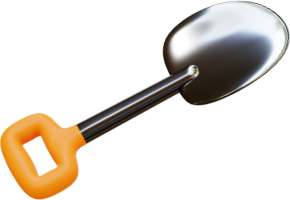
Most commonly used materials
Here are some of the most common materials you will find for 3D printing and some of their characteristics.

Polyastic acid (PLA)
PLA is the most common printing material having a low cost, good strength, and good dimensional accuracy. It isn’t suitable for long exposure to sunlight due to its low heat resistance.

Glycol Modified Polyethylene Terephthalate (PETG)
PETG filaments are known for their ease of printability, smooth surface finish, and water resistance. It is great for waterproof applications and snap-fit components.

Acrylonitrile butadiene styrene (ABS)
ABS is a low-cost material, great for printing tough and durable parts that can withstand high temperatures. Parts tend to shrink, though, so don’t expect it to be perfectly accurate.

Polyamide (Nylon)
Nylon is tough and partially flexible with high impact resistance and good abrasion resistance. Most suitable for plastic gears, screws, cable ties, and other parts that will be exposed to wear and tear.

Polyvinyl Alcohol (PVA)
PVA is commonly known for its ability to be dissolved in water and is often used as a support material for complex prints. Because of this it is quite expensive and requires special handling.

Special Materials
There are other materials and composites such as Carbon Fiber, Wood, or Rubber that apply to different use cases, and you can find out more by checking out these videos.
How to prepare a model for 3D printing








MAKE3D
We in make3d believe in power of makers bringing the printer owner and people who build together. From makers for makers.
© 2021 MAKE3D



